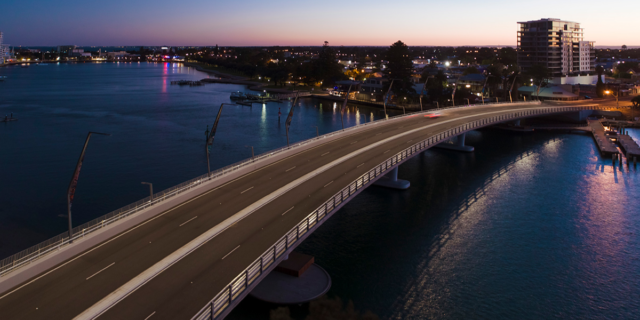The 2021 National State of Assets (NSoA) report offers a ‘steady as she goes’ review of Australia’s local government infrastructure.
The infrastructure report published by the Australian Local Government Association (ALGA) shows that while close to 70 per cent of local government assets are in good condition, $51 billion are in poor condition requiring increased maintenance and/or replacement.
“The key finding in the 2021 NSoA is that two-thirds of all local government assets are in good condition, while around one-third are not,” says Alexandra Pamment, ALGA’s Director of Transport and Infrastructure Policy. “Specifically, nearly 10 per cent of all local government assets need significant attention, and three in every 100 assets may need to be replaced.” These figures remain largely unchanged since the last report.
The report also highlights the state of infrastructure planning:
- Two thirds of councils have an Asset Management Plan adopted for their major infrastructure assets.
- 86 per cent of responding councils say they have adopted a long-term financial plan. This is an increase from 72 per cent in 2013;
- Of the 67 per cent of councils who say they have asset management plans in place, two-thirds include financial projections from the asset management plan in the financial plan;
- Councils in urban areas indicate higher compliance with the legislated asset management and financial planning and reporting requirements than those in lower populated rural regions.
Alaxandra says the overall 2021 NSoA results are consistent with what was found in 2018. Despite continued investment, the performance of local government community assets appears to have stabilised.
Steve Verity, IPWEA’s Principal Advisor on Asset Management, agrees. “The state of local government infrastructure assets overall has plateaued,” he says. “In terms of condition, it may have improved slightly in recent years, but function and particularly capacity remain worrying.”
Topline figures
Information included in the NSoA report was based on survey data provided by 454 LGAs (85 per cent of all councils). At the end of the 2019-20 financial year, it was estimated the replacement cost of local government assets (excluding land, plant and equipment) was $533 billion. This represents an investment of approximately $21,000 for every person in Australia.
These assets were rated on their condition (the value of service quality), function (how fit for purpose they are now and, in the future,) and capacity (degree of utilisation and, whether we need more or less of them).
Alexandra says the 2021 NSoA highlights the gap between what local governments currently spend on community infrastructure assets and what they would need to spend ensuring assets are properly maintained. She believes this “highlights the importance of continuous improvement in our systems to support our communities for the future – including helping councils invest in asset management training, technology and software enhancements, skills development and information sharing”.
Additional NSoA findings
Some notable topline numbers from the NSoA report:
- The value of overall infrastructure has grown steadily – 6.4 per cent per annum;
- The estimated total asset replacement cost is $533 billion;
- Assets are being consumed at an estimated rate of $7.7 billion (1.6 per cent) per year. This is equivalent to $304 per person in Australia every year;
- The remaining service potential of local government infrastructure is increasing resulting in the average age of local government infrastructure to decrease;
- On average, infrastructure is expected to last longer than originally anticipated;
- Councils in rural and remote areas are more likely to hold older infrastructure.
Areas of concern
Although there are positives in the report for Australia’s local government infrastructure, some areas will require significant investment to rectify.
The proportion of assets deemed in poor condition may be low and relatively unchanged at around 10 per cent, but this equates to $51 billion of infrastructure that needs some form of intervention to ensure services remain at current levels. There is also between $106 billion and $138 billion (20 to 26 per cent) of infrastructure considered in fair condition. These assets will require an increasing amount of maintenance in coming years if they aren’t managed effectively. While these assets may meet current demands, they are on the verge of falling into the poor category.
Steve believes effective long-term planning is the key to success. “Local government does a really good job of delivering services to our communities,” he says. “The key concern is its ability to plan for the long-term.
“Short-term decisions without due consideration of the long-term implications can have a cumulative effect, negatively impacting its ability to operate sustainably. We need to ensure we have skilled asset managers capable of reporting the capacity of the organisation to meet its strategic objectives.”
Alexandra believes an increase in government investment is also needed. “In the lead up to the 2022 Federal Election, ALGA will be seeking commitments as they relate to economic recovery, transport and community infrastructure and building resilience,” she says.














